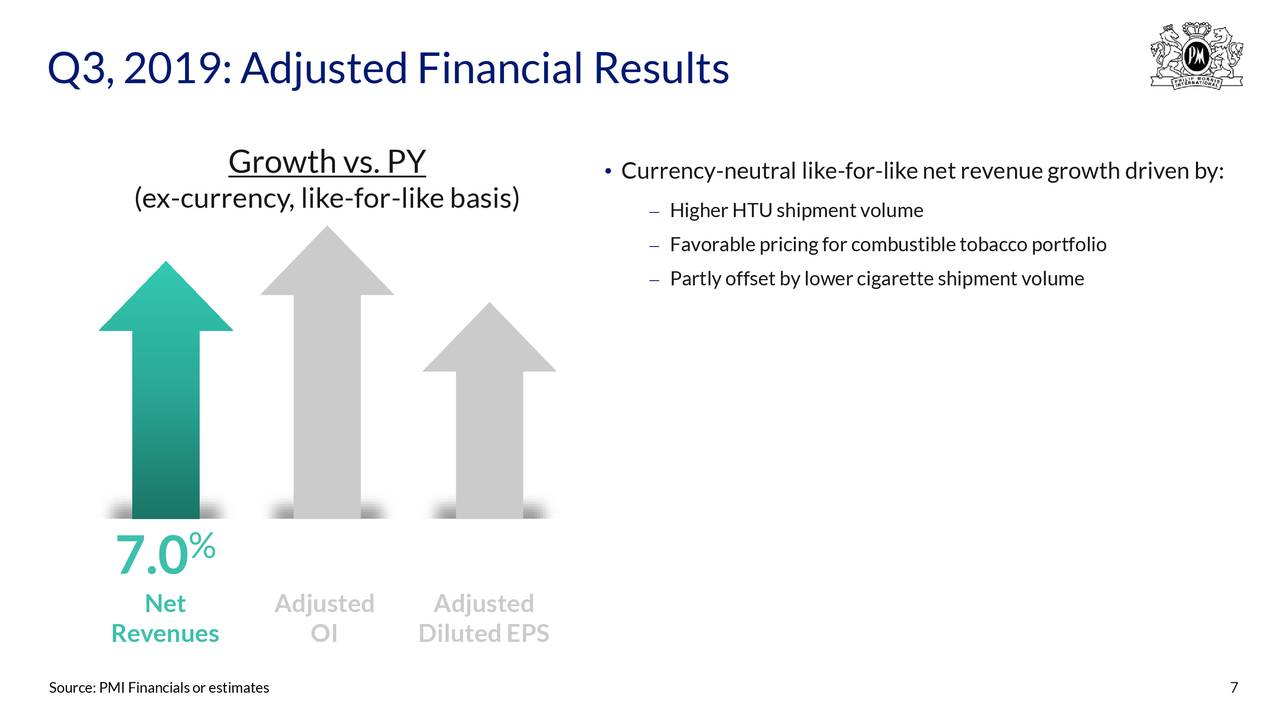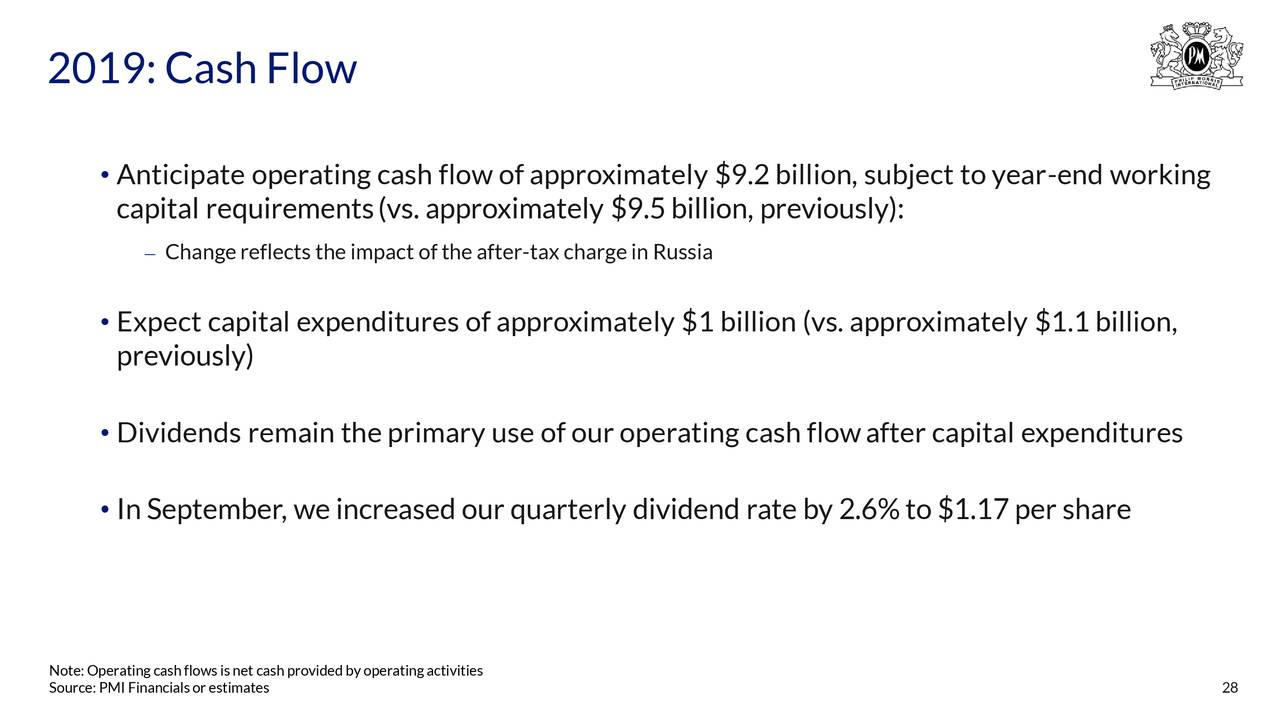Philip Morris (NYSE: PM) stock price remains steady after reporting strong results for the third quarter. PM shares hit the highest level in the last two months following Q3 results. This is due to the substantial growth in cash flows.
Besides cash flows, the company’s performed according to expectations. Although it missed revenue estimate for Q3, its adjusted earnings grew at a high single-digit rate. On the negative side, the company has dropped its earnings outlook for the full year amid tax related charges.
Poor Earnings Could Limit Philip Morris Stock Price Momentum
Its third-quarter revenue increased 1.8% year over year. The revenue is up 7% on a like-for-like basis. Its heated tobacco unit shipment volume was up 84.8% year over year. The cigarette shipment volume declined by 5.9% Y/Y. Its heated tobacco market share in IQOS markets rose by 1.3 points to 5.1%.
The company generated positive growth in margins despite the slow growth from revenues. Its adjusted operating income margin rose to 41.2% in Q3. Consequently, its adjusted operating income increased 8% from past year period.
“Our third-quarter results continued to reflect strong underlying business performance and include the better-than-anticipated timing of pricing and costs compared to our previously communicated assumptions for the quarter,” said André Calantzopoulos, Chief Executive Officer.
Cash Returns are Safe
Philip Morris is among the companies that are well known for offering steady growth in cash returns. Along with earnings announcements, the company has increased its quarterly dividend by 2.6% to $1.17 per share.
Its dividends are yielding around 6%. Its cash generation potential is strong enough to back the cash returns.
The company generated operating cash flow of $2 billion in the third quarter. This represents a 23% increase from the year-ago period.
The dividends look completely safe. This is because the company is not operating in the capital intensive industry. In addition, PM does not work on share buybacks. Therefore, they have a lot of room to make steady growth in dividends.
Trusted & Regulated Stock & CFD Brokers
What we like
- 0% Fees on Stocks
- 5000+ Stocks, ETFs and other Markets
- Accepts Paypal Deposits
Min Deposit
$200
Charge per Trade
Zero Commission on real stocks
64 traders signed up today
Visit Now67% of retail investor accounts lose money when trading CFDs with this provider. You should consider whether you can afford to take the high risk of losing your money.
Available Assets
- Total Number of Stocks & Shares5000+
- US Stocks
- German Stocks
- UK Stocks
- European
- ETF Stocks
- IPO
- Funds
- Bonds
- Options
- Futures
- CFDs
- Crypto
Charge per Trade
- FTSE 100 Zero Commission
- NASDAQ Zero Commission
- DAX Zero Commission
- Facebook Zero Commission
- Alphabet Zero Commission
- Tesla Zero Commission
- Apple Zero Commission
- Microsoft Zero Commission
Deposit Method
- Wire Transfer
- Credit Cards
- Bank Account
- Paypall
- Skrill
- Neteller
What we like
- Sign up today and get $5 free
- Fractals Available
- Paypal Available
Min Deposit
$0
Charge per Trade
$1 to $9 PCM
Visit Now
Investing in financial markets carries risk, you have the potential to lose your total investment.
Available Assets
- Total Number of Shares999
- US Stocks
- German Stocks
- UK Stocks
- European Stocks
- EFTs
- IPOs
- Funds
- Bonds
- Options
- Futures
- CFDs
- Crypto
Charge per Trade
- FTSE 100 $1 - $9 per month
- NASDAQ $1 - $9 per month
- DAX $1 - $9 per month
- Facebook $1 - $9 per month
- Alphabet $1 - $9 per month
- Telsa $1 - $9 per month
- Apple $1 - $9 per month
- Microsoft $1 - $9 per month
Deposit Method
- Wire Transfer
- Credit Cards
- Bank Account






